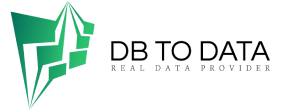How do you know if your brand’s PR budget is being spent on the right goals? How can you effectively calculate the ROI of your PR efforts? ? In today’s complex media landscape, where consumers are content creators, brands need to be present across a multitude of channels, and working with. How do you position yourself against your competitors the right influencers and media is key.
However, with ever-increasing pressure on marketing budgets, typically intangible
What is media monitoring?
In essence, media monitoring is the process BTC Users Number Data of tracking what is being said about your brand in the media . Sounds simple enough, right? For example, let’s say you’re a clothing brand: you might track what fashion magazines are saying about your latest collection or the general sentiment about your brand on social media.
But if you dig a little deeper, media tracking is much more than that. At the micro level, media tracking can be used to evaluate campaign performance and guide marketing decision making (more on this later).
When we talk about media monitoring
we are referring to a variety of media formats. Media monitoring originated in the days of print and broadcast media, when people literally hand-cut newspaper clippings to gather data on how a particular topic was being covered. Today, the term media monitoring encompasses traditional print media, online publications, and social media.
A related term is social media monitoring , which specifically refers to monitoring mentions of brands or particular hashtags on social media platforms.
Another term you may come across is social listening : monitoring online conversations and reacting to insights gleaned from the data collected.
In our definition of media monitoring, monitoring social mentions is only part of the larger process. A holistic approach to media monitoring encompasses both online and offline media formats and is a three-step process:
Collect data on brand mentions.
Analyze the data.
Make data-driven decisions.
Why is media monitoring important?
Media monitoring is essential to the process of controlling brand awareness and reputation.
It can also allow you to uncover opportunities you wouldn’t otherwise be aware of (think potential brand collaborations, campaign expansions, new geographic targets, etc.)
The longer you engage in this process, the Colombia Phone Number List more data you will have to inform your decision making. This data is extremely valuable in trying to stay relevant to that audience.
Let’s take an example: Imagine you’re running a new marketing campaign across multiple social platforms.
Media tracking data can also give
Which platforms, types of media, and influencers were worth the expense?
Where to allocate budget in the future to get the maximum ROI?
How are you performing compared to your competitors in terms of media impact?
Raw data alone won’t tell you,
But if you use a standardized measurement system like Launchmetrics’ MIV® (Media Impact Value), you’ll have a real dollar value tied to every line item in your campaign. This allows you to truly measure the impact of your PR and marketing efforts and create benchmarks for future campaigns.
Regardless of whether you use a standardized metric like
MIV®, the bottom line is that media monitoring is absolutely essential for any brand that wants to stay competitive, relevant, and make the best PR and marketing decisions possible.


